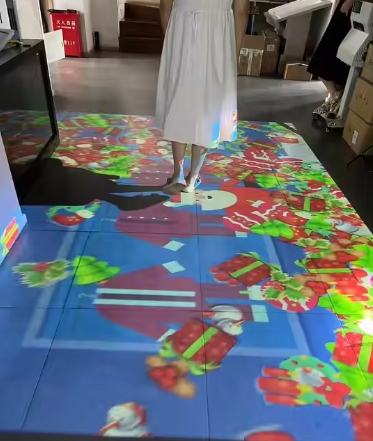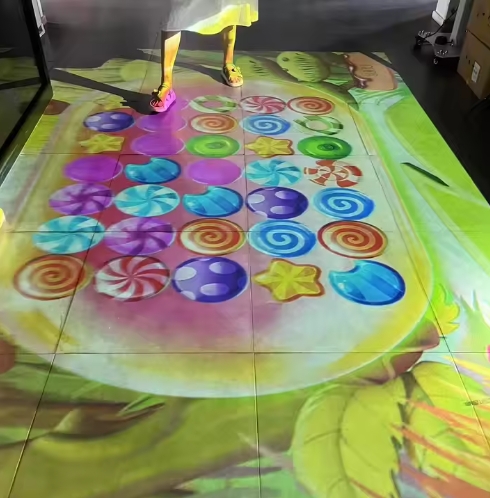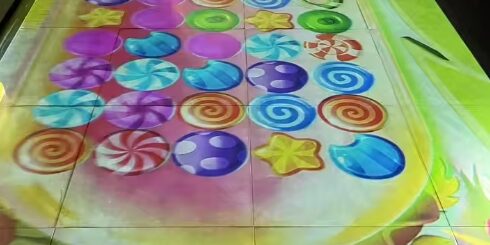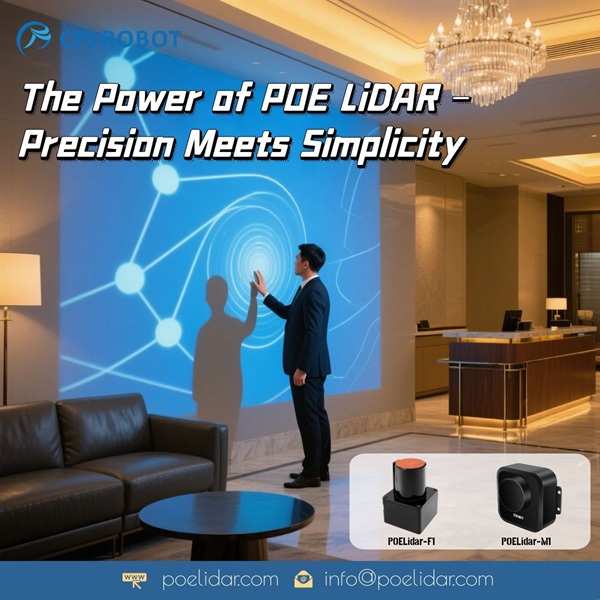Introduction
Ground interactive projection is an exciting technology that enables users to engage with dynamic visuals projected onto the floor. From games and advertisements to educational displays, ground interactive projection systems have found their way into numerous environments, making spaces more immersive and interactive. However, achieving a seamless interaction experience requires precise technology. Here, we delve into how LiDAR (Light Detection and Ranging) is transforming these systems, enabling accurate motion capture and interaction recognition that enhances user experience.

What Is Ground Interactive Projection?
Ground interactive projection is a combination of computer vision and projection technology designed to detect user movements and respond by displaying animations or effects on the projected surface. Here’s how it works:
- Computer Vision: This aspect captures and interprets user movements. It involves a camera that monitors the interactive space and uses algorithms to detect motion, position, and gestures.
- Projection Technology: This part is responsible for displaying visuals on the ground. Projectors cast interactive images, videos, or animations that respond to the data provided by the computer vision system.
These two components work together, allowing users to trigger interactions—such as rippling water effects, opening digital doors, or activating animated characters—simply by walking or moving across the projected area.
How LiDAR Technology Elevates Ground Interactive Projection

LiDAR technology, commonly associated with autonomous vehicles and surveying, has made its way into interactive projection. It uses laser pulses to measure distances and map environments with a high degree of accuracy. Here’s how it complements and enhances traditional ground projection systems:
1. Precision in Motion Capture
LiDAR offers unmatched accuracy in capturing movement and distance. In ground interactive projection, LiDAR sensors map out the entire interaction space, creating a three-dimensional representation. This helps identify and track users’ exact locations and motions on the floor, ensuring that interactions occur in real time and with high accuracy.
For example, in a retail environment, if a customer steps on a projected image of a product, the system can use LiDAR’s precise tracking to immediately respond, perhaps displaying more product information or a promotional animation. This precision ensures seamless interaction, enhancing user engagement and enjoyment.
2. Real-Time Interaction Recognition
Interactive systems must respond instantly to user movements to provide an immersive experience. LiDAR offers a fast, continuous data feed, which allows the projection system to recognize interactions as they happen. This significantly reduces latency, making the interaction feel smooth and immediate.
For instance, in an interactive gaming setup, when a player steps or jumps on the projection, LiDAR ensures that the system accurately captures the motion and triggers the corresponding effect in real time. This immediacy in response is crucial for an immersive experience, especially in high-energy games or performances.
3. Adaptability to Lighting Conditions
One of LiDAR’s key advantages is its ability to function reliably in various lighting conditions. Unlike cameras that rely on visible light, LiDAR uses infrared laser pulses, making it resistant to changes in ambient light. This makes it ideal for both brightly lit spaces and dimly lit environments where traditional computer vision might struggle.
For example, in a museum exhibit with varying light levels, LiDAR can consistently track visitors as they interact with the projection. Whether the environment is dark or flooded with natural light, the system remains effective, ensuring a consistent experience regardless of lighting conditions.
Practical Applications of LiDAR-Enhanced Ground Interactive Projection
Thanks to its precision, real-time responsiveness, and adaptability, LiDAR-enhanced projection systems have a wide range of applications:
- Retail and Advertising: In retail, interactive projection floors engage customers, creating memorable brand experiences. LiDAR’s accuracy ensures that every customer interaction is captured, allowing brands to display targeted messages or promotions as people move through the space.
- Museums and Exhibitions: Educational spaces leverage ground interactive projection to provide hands-on learning experiences. For example, users can “step” on projected artifacts, triggering animations or information displays. LiDAR ensures accuracy, allowing visitors of all ages to interact seamlessly with the exhibit.
- Entertainment: From interactive games to live events, ground projection systems create dynamic, engaging activities. In entertainment settings, LiDAR’s real-time responsiveness enhances the interactive experience, whether it’s stepping on projected images of musical instruments to “play” notes or engaging in floor-based digital games that respond instantly to movements.
Conclusion
Ground interactive projection technology has redefined how we experience digital content in physical spaces, making interactions more engaging and meaningful. LiDAR, with its high precision, real-time responsiveness, and adaptability to different lighting conditions, plays a transformative role in these systems. By accurately capturing user movements and responding in real time, LiDAR helps create a seamless and immersive interactive experience that enhances any space it’s integrated into.
As we continue to advance in interactive technology, the role of LiDAR in ground interactive projection systems will only grow, bringing more precise and engaging experiences to users worldwide. Whether in retail, education, or entertainment, this technology exemplifies how LiDAR elevates the possibilities of interactive projection, turning floors into responsive digital canvases.







